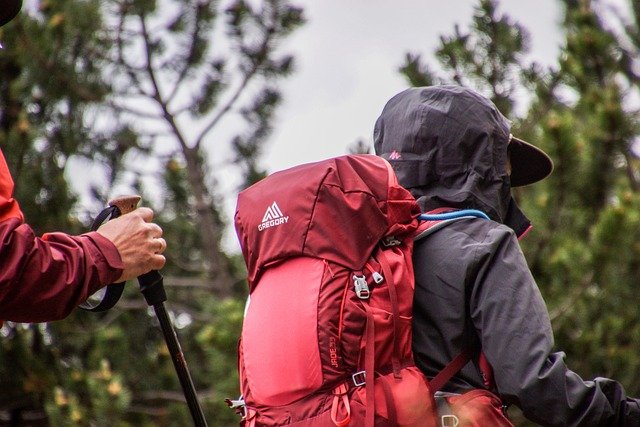Treetop Trekking: Exploring the World from a Canopy Perspective
Imagine traversing lush forests not by foot, but suspended high above the ground, moving from tree to tree like a modern-day Tarzan. This isn't a scene from a fantasy novel, but a growing trend in adventure travel known as treetop trekking. As travelers seek unique experiences that combine nature, adventure, and sustainability, canopy walks and aerial trails are emerging as an exciting way to explore the world's forests from a completely new vantage point.

However, as environmental awareness grew and eco-tourism gained popularity in the 1980s and 1990s, the concept of canopy walks began to evolve. Conservationists and tourism operators saw an opportunity to offer visitors a unique perspective on forest ecosystems while promoting environmental education and sustainable tourism practices.
The Rise of Treetop Trekking as Adventure Tourism
In recent years, treetop trekking has evolved from a niche activity into a mainstream adventure tourism experience. Parks and nature reserves worldwide have begun incorporating canopy walks and aerial trails into their offerings, catering to visitors seeking adrenaline-pumping activities in natural settings.
Modern treetop trekking courses often feature a combination of suspended bridges, zip lines, Tarzan swings, and even tree houses. These elements are carefully designed to provide thrilling experiences while ensuring safety and minimizing impact on the surrounding ecosystem.
The Unique Appeal of Canopy Perspectives
What makes treetop trekking so appealing to travelers? For many, it’s the opportunity to experience nature from a completely different perspective. Moving through the forest canopy allows visitors to observe wildlife, plant life, and ecosystems that are often invisible from the ground.
Bird enthusiasts find canopy walks particularly rewarding, as they offer unparalleled opportunities for spotting and observing various species in their natural habitats. For photographers, the elevated vantage points provide stunning opportunities to capture landscapes and wildlife from unique angles.
Sustainability and Conservation Efforts
One of the most significant advantages of treetop trekking is its potential for sustainable tourism. When properly designed and managed, canopy walks and aerial trails have minimal impact on the forest floor and wildlife habitats. This low-impact approach aligns well with the growing demand for environmentally responsible travel experiences.
Many treetop trekking operators incorporate conservation education into their offerings, using the unique perspective of the canopy to highlight the importance of forest ecosystems and biodiversity. This combination of adventure and education has proven effective in raising awareness about environmental issues and inspiring visitors to become more engaged in conservation efforts.
Global Hotspots for Treetop Adventures
While treetop trekking opportunities can be found in forests worldwide, certain destinations have become renowned for their canopy experiences:
-
The Amazon Rainforest: Several locations in Brazil, Peru, and Ecuador offer extensive canopy walks, allowing visitors to explore the world’s largest rainforest from above.
-
Costa Rica: Known for its biodiversity and eco-tourism, Costa Rica boasts numerous treetop trekking courses, particularly in its cloud forests.
-
Australia: The ancient forests of Queensland and Tasmania feature some of the world’s most extensive canopy walks, offering views of unique flora and fauna.
-
Ghana: The Kakum National Park in Ghana is home to Africa’s first canopy walkway, providing a thrilling way to observe the continent’s tropical forests.
-
Malaysia: The Danum Valley Conservation Area in Borneo offers canopy walks that showcase the rich biodiversity of Southeast Asian rainforests.
Insider Tips for Treetop Trekkers
-
Choose the right time: Early morning or late afternoon often offer the best wildlife viewing opportunities.
-
Dress appropriately: Wear comfortable, breathable clothing and closed-toe shoes with good grip.
-
Bring binoculars: They’ll enhance your ability to spot wildlife and observe details in the canopy.
-
Listen to your guide: Local guides often have in-depth knowledge about the ecosystem and can point out easily missed details.
-
Take it slow: Don’t rush through the experience. Take time to observe and immerse yourself in the unique environment.
-
Consider your fitness level: While many canopy walks are suitable for a range of fitness levels, some more advanced courses may require a higher degree of physical ability.
The Future of Forest Exploration
As we look to the future, treetop trekking stands at the forefront of innovative, sustainable adventure travel. By offering thrilling experiences that also educate and inspire conservation efforts, these elevated adventures are changing the way we interact with and appreciate forest ecosystems. Whether you’re an adrenaline junkie, a nature lover, or simply someone looking for a new perspective on the world, treetop trekking offers a unique way to reconnect with nature and gain a deeper appreciation for the complexity and beauty of our planet’s forests.





